Anderson, J. A.
Chicago, Illinois
Anderson's New View Box
J.A. Anderson & Co.:
Jonas A. Anderson (November 1842 - September 17, 1911), not to be confused with the Swedish John A. Anderson, photographer 1885-1900 of the Rosebud Indian Reservation in Nebraska. He immigrated from Norway to the United States in 1849, settling in Chicago in 1851. He founded J. A. Anderson & Co. in 1870, manufacturing photographic apparatus. His son, Walter E., took over the company by 1900.
From: Origin, Growth, and Usefulness of the Chicago Board of Trade, Historical Publishing Co., 1885-6, page 282:
J. A. Anderson, Manufacturer of Photographic Apparatus, Nos. 63 and 65 East Indiana Street.
- A prominent house in Chicago engaged in the manufacture of all kinds of photographic necessaries and appliances is that of Mr. J. A. Anders, Nos. 63 and 65 East Indiana Street. This business was founded by the present proprietor in 1870, at No. 212 Illinois Street, and in the following year the premises were destroyed by the great fire. Mr. Anderson promptly recommenced business at his present location. The premises are very commodious and are equipped with all the latest improved machinery and appliances necessary for the systematic production of photographic apparatus, employment being given to about forty highly skilled and experienced operatives. The photographic supplies manufactured by Mr. Anderson are unsurpassed for quality, ingenuity of construction, workmanship, and general excellence, by those of any other first-class firm in this country or Europe, and in consequence of their unsurpassed superiority their sale is annually increasing. The system which prevails in the factory indicates the most careful supervision, while the judgment and ability displayed in the manufacture of the photographic apparatus indicate that Mr. Anderson is thoroughly conversant with every detail of this scientific business, and fully acquainted with the wants and requirements of the profession. His is a native of Norway, but has resided in Chicago since 1851, and is greatly respected by the community for his unswerving honor and integrity. The just manner in which this business is conducted, as well as the superior quality and reliability of the stock are guarantees sufficiently obvious why photographers requiring a complete outfit in the trade would do well by giving their orders to this representative house.
In 1900, Anderson & Co. manufactured the Mammoth Railroad Camera, which had a plate size of 4 ½x8 feet, and was the largest camera ever constructed at that time. The company J. A. Anderson is not listed along with Jas. H. Smith, Burke & James and other photographic suppliers in the December 15, 1901 Factory Inspectors of Illinois.
They appear to have mostly manufactured their own design of cameras, such as Anderson's New View Box, which appears to be a model unique to Anderson. Likewise, their studio cameras, having a configuration similar to many other manufacturers, have details that set them apart from the other manufacturers (see Anderson's Extra Quality Portrait Camera and the Success-like Studio Camera). However, at least one studio view camera extant bears an Anderson metal plate on its front standard and a Scovill Mfg. Co. stamp on the rails. The style of this studio camera appears to be a common Scovill type, the most distinctive feature being a deeply recessed front standard. So, at least in that one case, it appears that Anderson also bought the camera from Scovill, slapped on their own label, and re-sold it. Other studio view cameras marked Anderson are of a different, perhaps their own, design/configuration, e.g., Anderson's Extra Quality Portrait Camera and the Success-like Studio Camera, featured on this web site.
No. 7 Catalogue, T. F. Indermill, St. Joseph, MO, October 1,
1885, p. 94
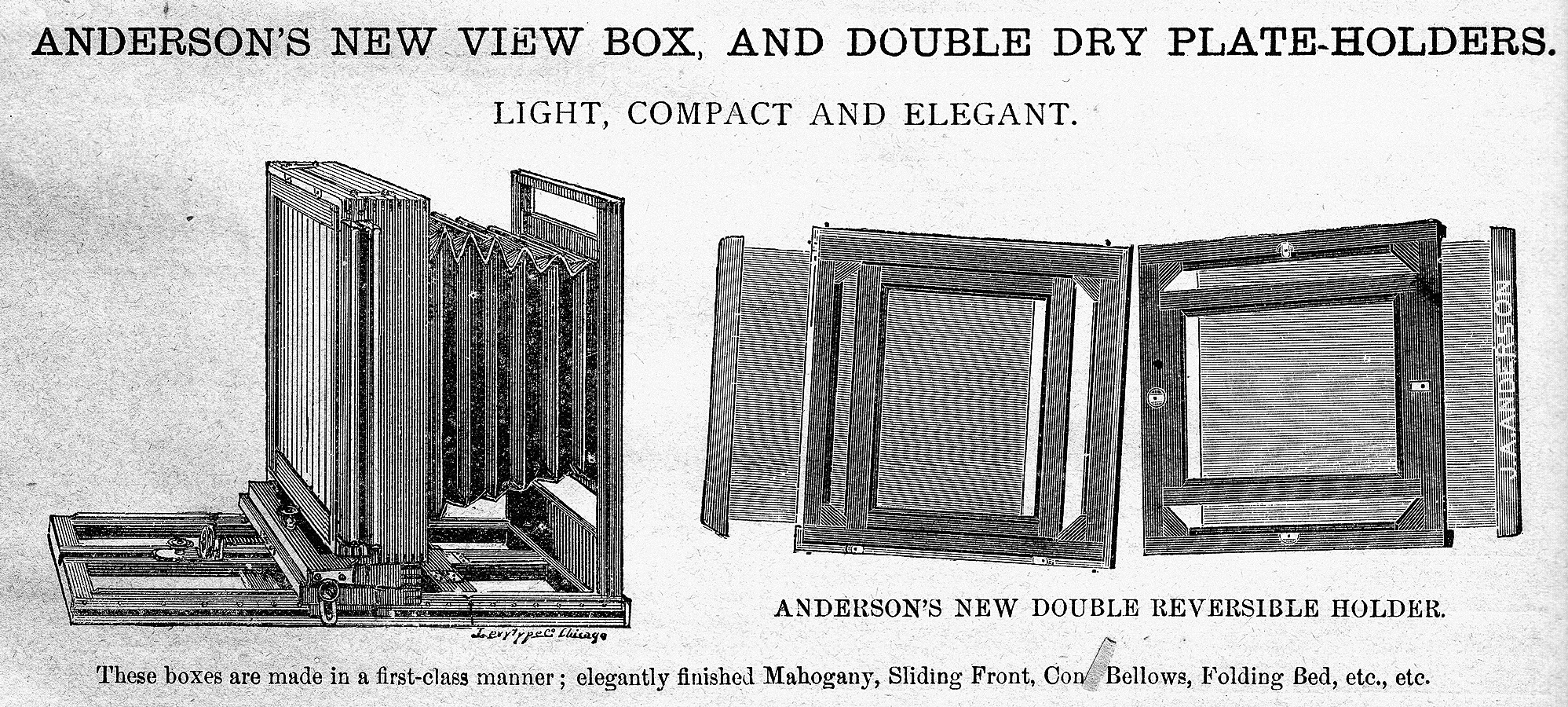
8 x 10
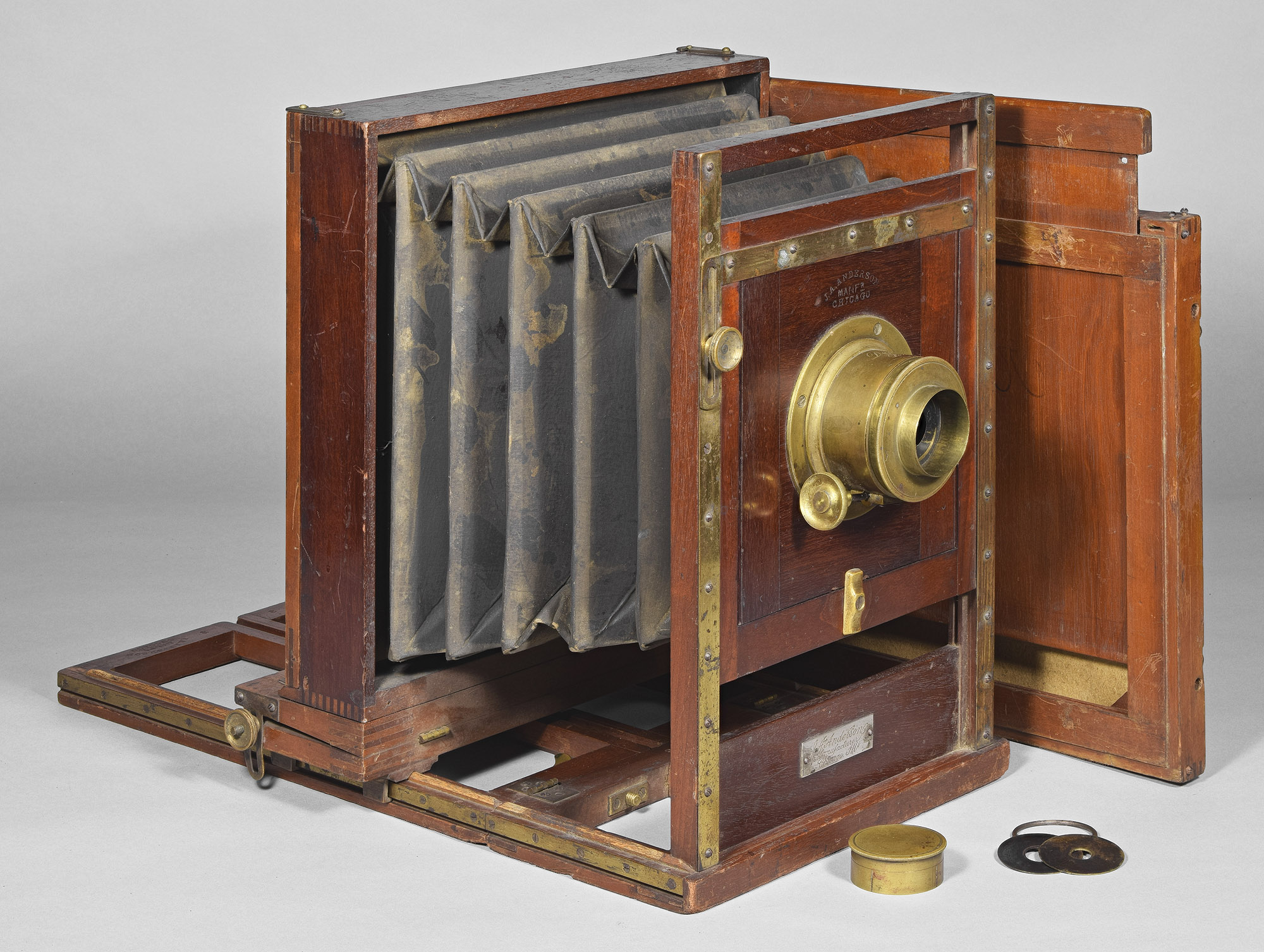

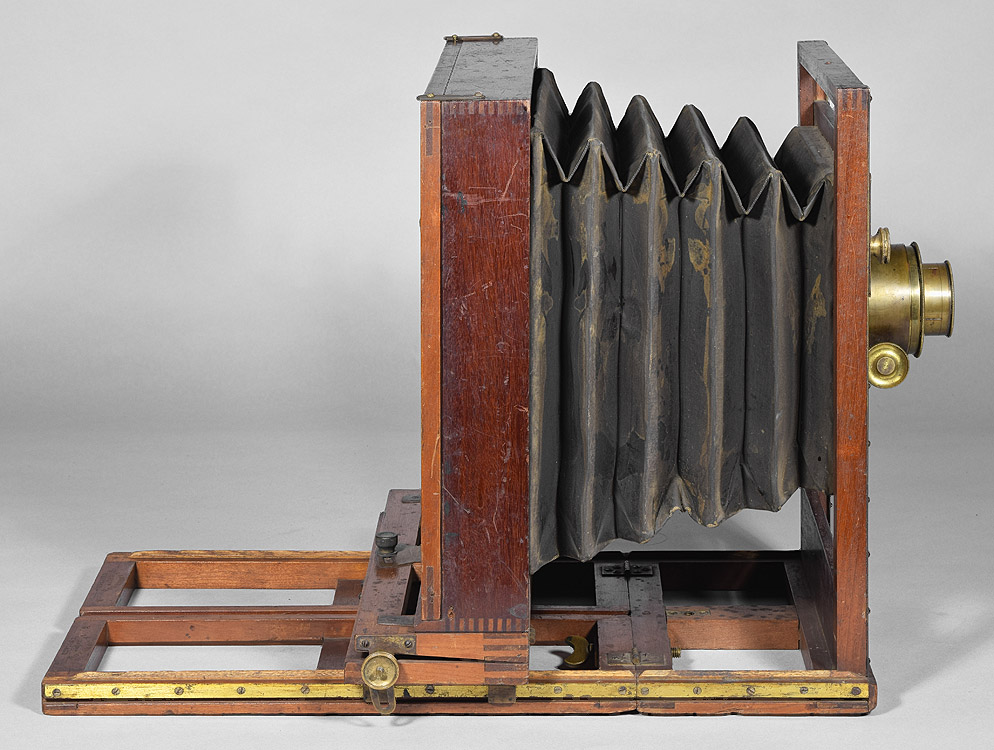
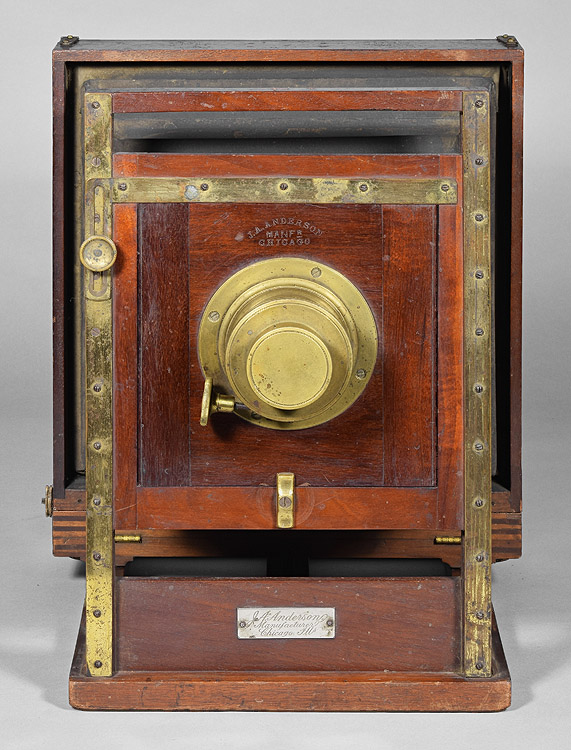


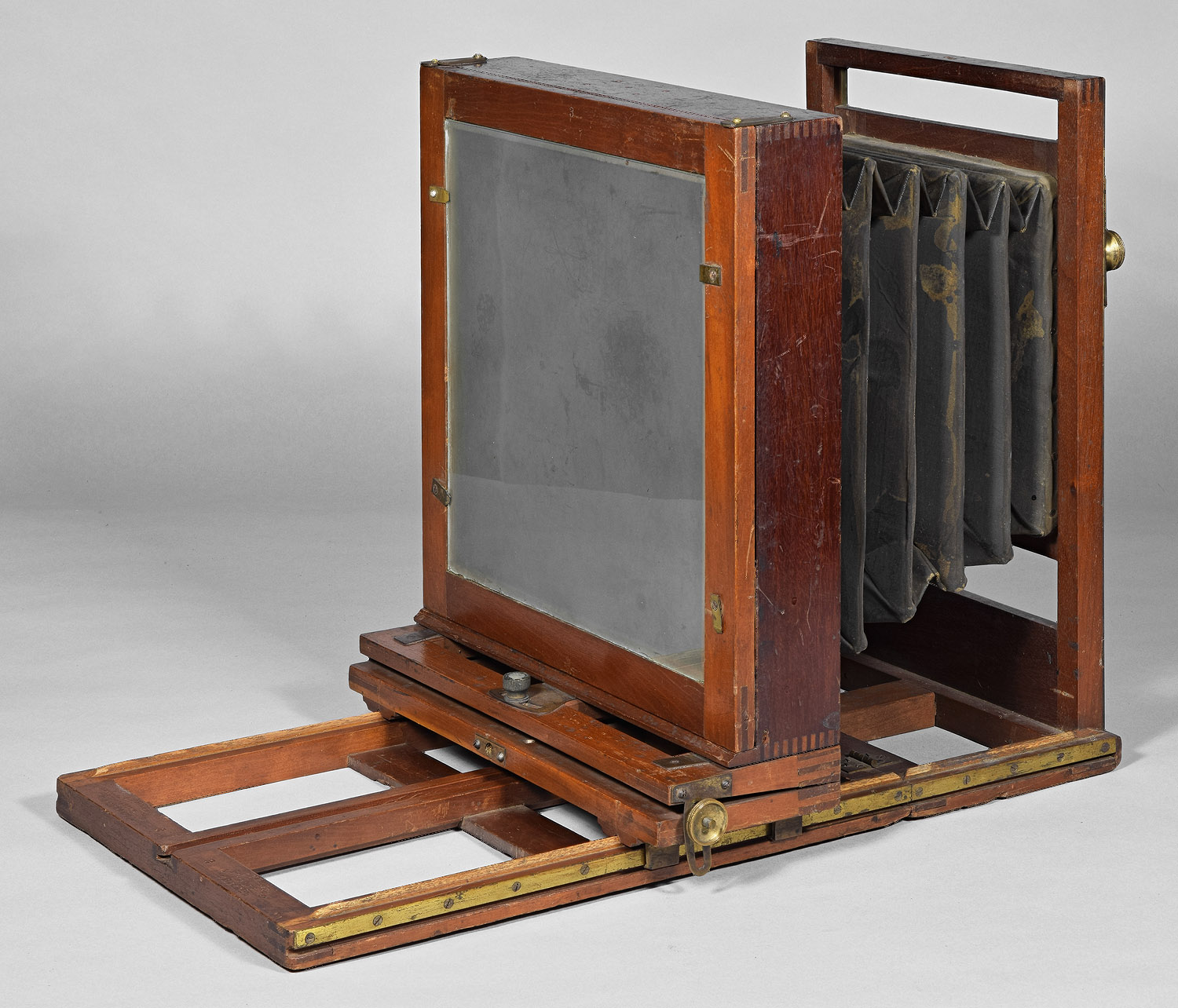
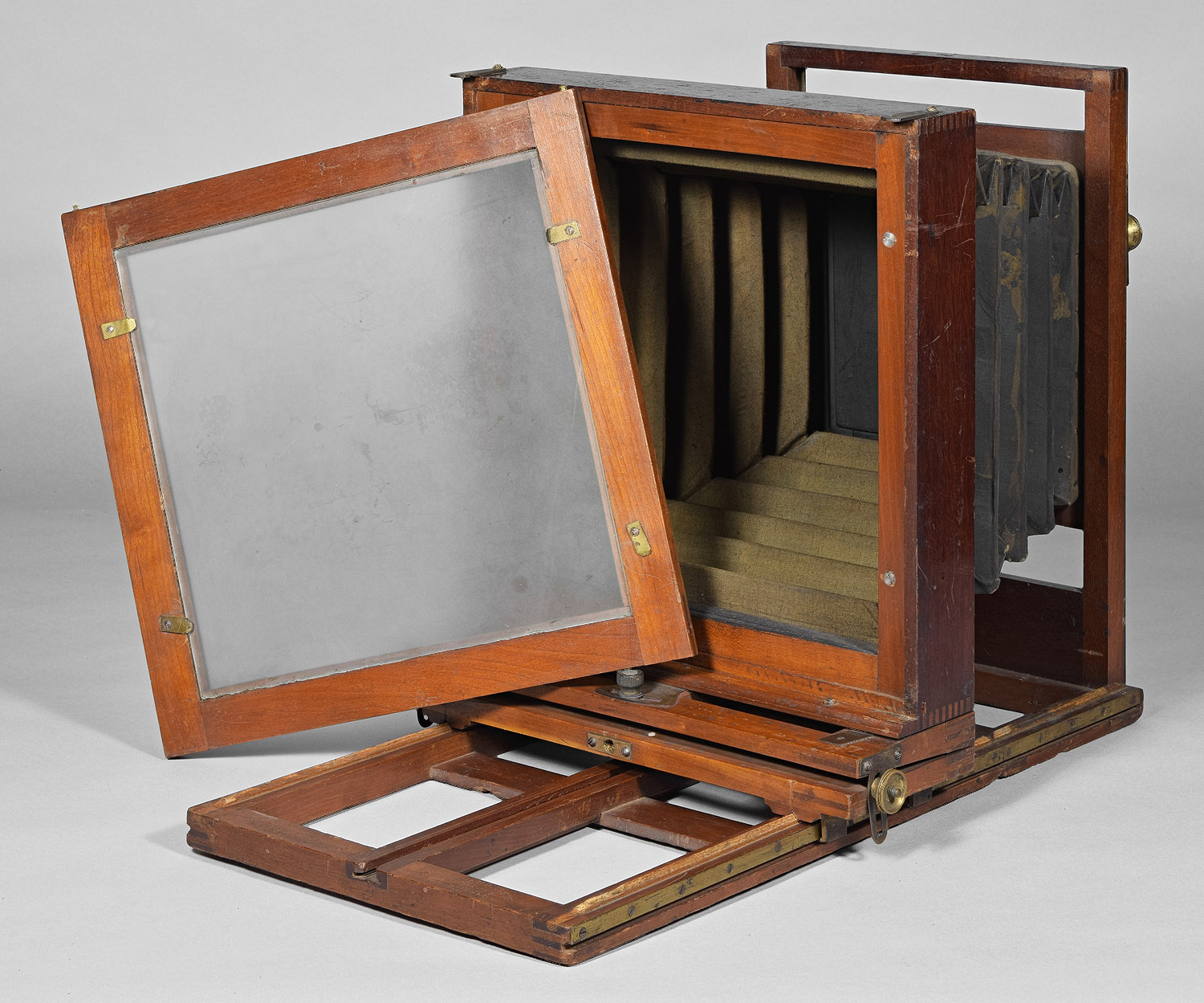
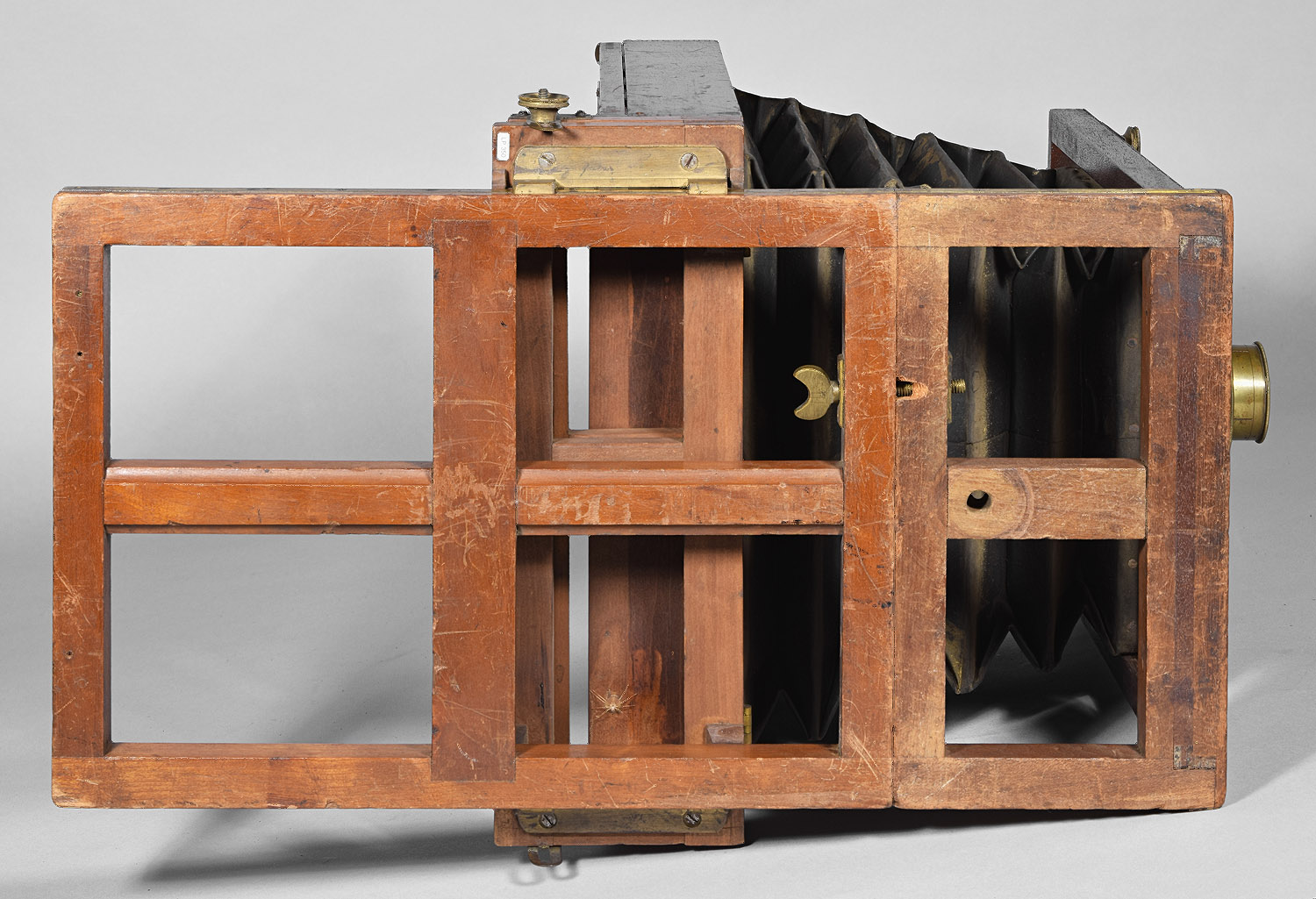
Metal Label on the Bottom of the Front Standard

Stamp on Top of the Lens Board
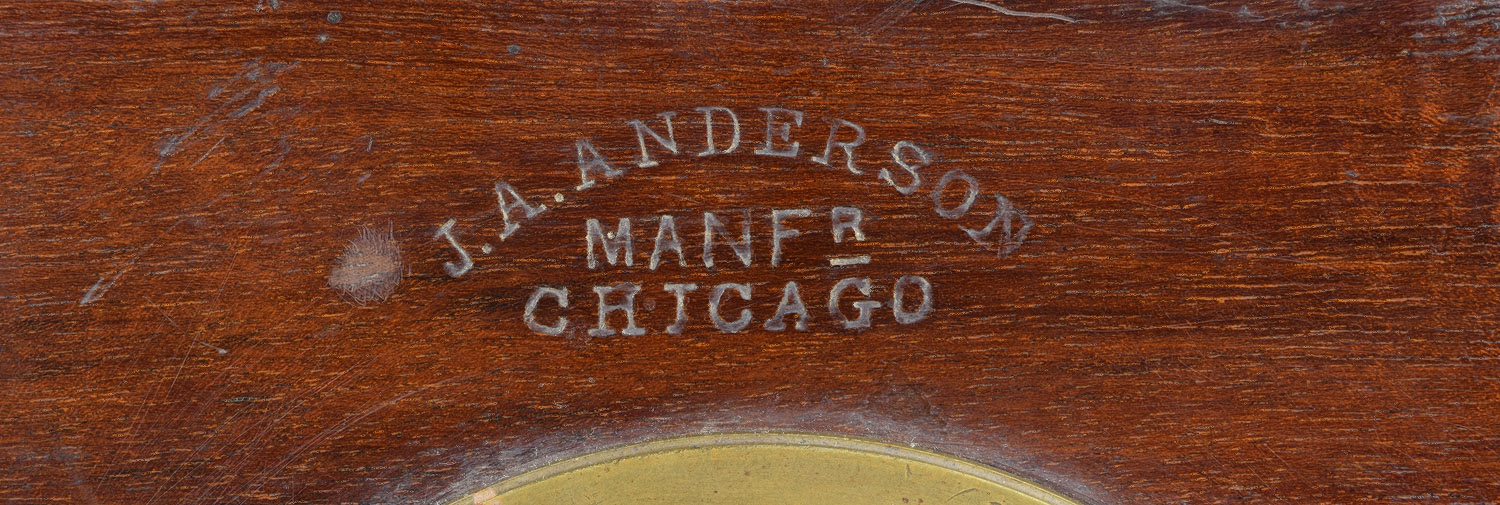
Manufacturer Stamps (the Same as on the Lens Board) and Assembly Number
Stamps on the Rear of the Platform

Date Introduced: ;
Years Manufactured: c.
1885 - 1888 Anderson cameras
are rare, compared to the major manufacturers, such as E. & H.T. Anthony
or Scovill. The name Anderson's New View Box
came from the Indermill catalog (1885) rather than an Anderson catalog,
which so far have not been found. The Anderson's New
View Box is fairly massive for a field
camera, though not as massive as the
Anderson's View Box/Anderson's Compact Folding View. Even
though advertised as late as 1888, is a
throw-back to the wet-plate era. Its
square plate holder and ground glass allow an 8x10 plate to be inserted
either horizontally or vertically in the holder without moving the
camera, similar to wet-plate design. While perhaps convenient,
this arrangement had, by 1888, long been abandoned by other
manufacturers in favor of lighter weight designs,
such as
Anthony's
Novel View (1882), which require the camera to be turned
to change from horizontal to vertical. References:
Back to Miscellaneous Camera Companies
Construction: back focus
via push-pull with fine focus screw (missing in photos); single
or double or no swing; rising front; reversing by adjustable plate
holder; three-piece lens board
Materials: mahogany body, cherry base,
brass hardware, black fabric bellows
Sizes Offered: 6 ½x8 ½; 8x10; 10x12;
11x14; 14x17; 17x20; 18x22; 20x24
Notes:
No. 7 Catalogue, T. F. Indermill, St. Joseph, MO, October 1,
1885, p. 94
Catalogue Illustrated, W.D. Gatchel
(Louisville, KY), 1888, p. 23
